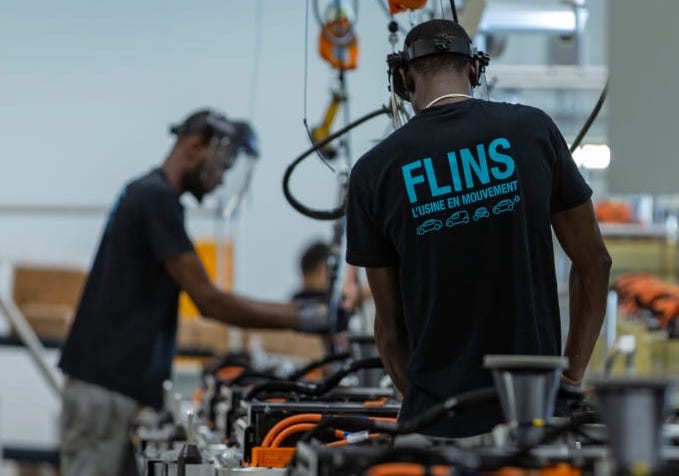Multinational car manufacturer Groupe Renault has announced that it’s creating an ‘Re-Factory’ that’s dedicated entirely to sustainable automotive production.
The facility, which is being built near Paris in the French town of Flins, will focus on reducing waste by recycling and retrofitting vehicles, as well as offering a 3D printed spare parts service. Through the initiative, Renault aims to achieve a negative carbon balance by 2030, and create an industrial ecosystem that encourages circular innovation.
“The Re-Factory is a new breath of life for Renault, its employees and for the entire region’s dynamism,” said Jean-Dominique Senard, Chairman of the Board of Directors at Renault. “This project is based on our pioneering commitment to the circular economy, and meets our ambition to positively transform our industry.”
Renault’s eco-friendly automotive factory
Renault’s Re-Factory is part of its broader transformation strategy, that’s designed to reduce its industrial footprint, and take advantage of sustainable opportunities. During the three-year project, the firm plans to convert its site in Flins into both a hub for eco-friendly ideas, and a factory that retrofits vehicles rather than building new ones.
The facility, which is set to be opened in stages, will be organized around four different activity centers: Re-Trofit, Re-Energy, Re-Cycle and Re-Start. With Re-Trofit, Renault’s engineers will work to extend the lifespan of second-hand cars by efficiently managing and recycling the materials and spare parts it has on-site.
Working with its Parisian partners, Renault aims to minimize downtime and recondition the cars in an average of just six days, enabling it to restore over 45,000 vehicles. The company plans to rennovate electrical cars too, not just by reusing cells, but recharging them with more portable and sustainable energy sources.
The last part of Renault’s Re-Factory to open will be its Re-Cycle facility, which is set to be a dismantling site that focuses on recovering materials from written-off cars. In cases where the company is unable to retrieve sufficient spare parts for legacy vehicles though, it aims to use its on-site 3D printers to produce replacements.
Renault plans to offer the service to individuals such as garages and car collectors too, to widen the Re-Factory’s impact. The complex is also set to house an AM Center of Excellence, that will prototype additive spare parts, and identify potential opportunities to deploy the technology in predictive maintenance applications.

Additive opportunities within automotive
Renault’s upcoming facility may be Europe’s first circular car factory, but 3D printing is already being utilized in various ways by some of its automotive competitors. BMW for instance, recently opened a dedicated innovation campus that’s working to optimize additive technologies for comprehensive use across its business.
The company is also collaborating with eleven industry partners as part of its IDAM project, in which it aims to 3D print over 10,000 spare parts. This trend of replacing legacy components with additive substitutes can be seen elsewhere as well, and Volkswagen has been fabricating parts for its Golf GTI since 2017.
Similarly, Daimler has introduced digital warehousing within its heavy duty vehicles business, which has seen it fabricate several spare parts on-demand. Although these initiatives are designed to lower manufacturing costs and lead times, they reduce material waste too, by ensuring that they only what’s needed is produced.
How eco-friendly is metal 3D printing?
While the sustainability benefits of metal additive manufacturing have been touted for some time, various groups have now started to question whether the technology could be made more circular.
The AMGTA for example, recently released its first report into the impact of metal 3D printing on the environment. Surprisingly, the research found that on average, additive manufacturing has a higher carbon footprint, per kg of material processed, than its conventional counterparts.
In response to this growing sustainability movement within 3D printing, companies such as Wabtec have sought to highlight their eco-friendly achievements. The firm has released a report detailing how integrating additive manufacturing into its production processes has contributed to its circular aims.
Similarly, metal binder jetting OEM ExOne has launched its #MakeMetalGreen social media campaign to draw attention to the sustainability of its 3D printers. The company claims that its systems are able to produce lightweight metal parts with “little to no waste” at high throughput.
To stay up to date with the latest 3D printing news, don’t forget to subscribe to the 3D Printing Industry newsletter or follow us on Twitter or liking our page on Facebook.
Are you looking for a job in the additive manufacturing industry? Visit 3D Printing Jobs for a selection of roles in the industry.
Featured image shows part of Renault’s automotive production line. Photo via Renault.



